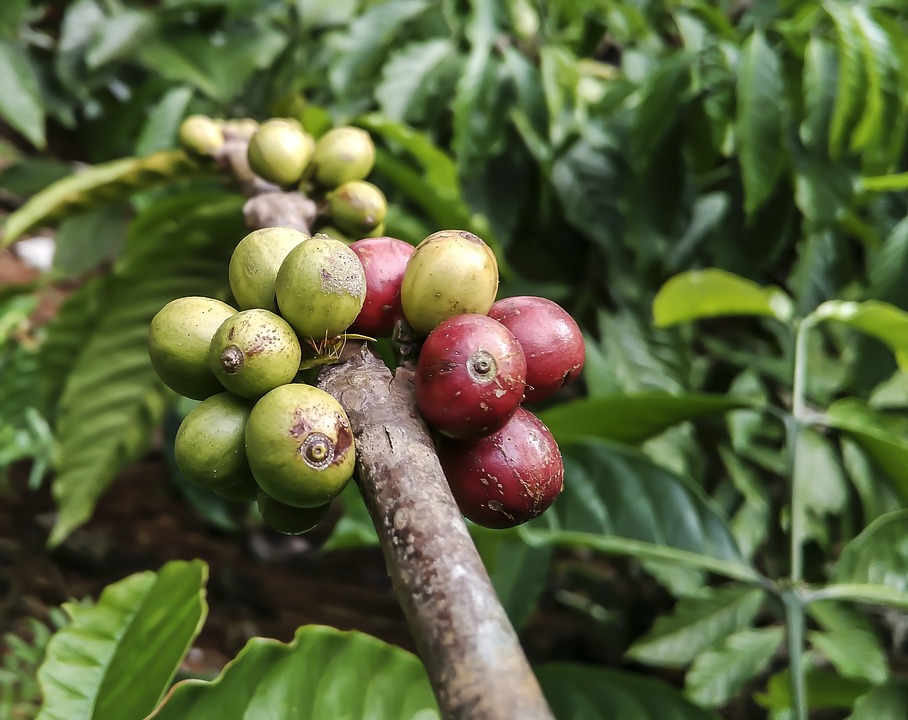On the process of changing coffee fruit into coffee powder in different degrees
For professional baristas, please follow the coffee workshop (Wechat official account cafe_style)

When you grow coffee, you can't help but know a few terms for coffee. Here are a few nouns commonly encountered in the coffee industry:
1. Coffee fruit Coffee cherries: coffee flowers after self-pollination, the fruit is called coffee fruit. From young fruit, medium fruit, to mature fruit. Because the peel of ripe fruit is generally red, much like cherry Cherry, it is also called coffee cherry Coffee cherry. In practice, I prefer to use coffee fruit directly.
two。 Coffee beans with colloid Mucilaged beans: coffee fruit uses a peeling machine to remove the exocarp and part of the colloid, in which there are two (only one round bean) coffee beans with colloid. This kind of coffee bean is wet and there is a layer of sticky gelatinous body outside the hard shell. This layer of colloid can be removed by fermentation or mechanically.
3. The word Parchment beans:Parchment refers to "parchment", so it can be literally translated as "parchment beans". However, this translation is very strange, why coffee beans have anything to do with parchment? Traditionally, I like to translate it directly into "raw beans with shells", which refers to coffee beans with hard shells.
4. Raw beans Green beans: raw beans with shells are called raw beans after their hard shells are removed. If it is translated literally, it should be "mung bean". However, there will be confusion, how do coffee beans have anything to do with mung beans? So, just translate it into raw beans.
5. Roasted beans Roasted beans: after raw beans are roasted in a roaster, beans with coffee flavor are called roasted beans. Some people call baked beans "cooked beans", which are different and compared with raw beans. Beans before baking are called raw beans, and beans after baking are called ripe beans.
6. Grind beans Ground beans: at this stage, it can also be called coffee powder.
Important Notice :
前街咖啡 FrontStreet Coffee has moved to new addredd:
FrontStreet Coffee Address: 315,Donghua East Road,GuangZhou
Tel:020 38364473
- Prev

How is the coffee fruit turned into coffee beans? what is the parchment that wraps coffee beans?
Communication of professional baristas Please follow the coffee workshop (Wechat official account cafe_style) this is a kind of rich fragrant coffee, it is the seed of coffee tree fruit. The unique aroma and taste of coffee are made by a thermal reaction called roasting. This time we will introduce raw beans before the coffee is roasted. What are coffee beans? First of all, coffee beans are the seeds of coffee trees (Rubiaceae
- Next

How do Sidamo Coffee Raw beans distinguish the flavor characteristics of Sidamo coffee?
Professional barista communication please pay attention to the coffee workshop (Wechat official account cafe_style) Sidamo coffee grows in the southernmost Ethiopian plateau between 4600 and 7200 feet above sea level (Sidamo province), is a famous boutique coffee area in southern Ethiopia, bordering Kenya, located in the southeast of Gemma, just south of the capital, usually sweet, but also more popular, its annual output
Related
- Beginners will see the "Coffee pull flower" guide!
- What is the difference between ice blog purified milk and ordinary milk coffee?
- Why is the Philippines the largest producer of crops in Liberia?
- For coffee extraction, should the fine powder be retained?
- How does extracted espresso fill pressed powder? How much strength does it take to press the powder?
- How to make jasmine cold extract coffee? Is the jasmine + latte good?
- Will this little toy really make the coffee taste better? How does Lily Drip affect coffee extraction?
- Will the action of slapping the filter cup also affect coffee extraction?
- What's the difference between powder-to-water ratio and powder-to-liquid ratio?
- What is the Ethiopian local species? What does it have to do with Heirloom native species?

